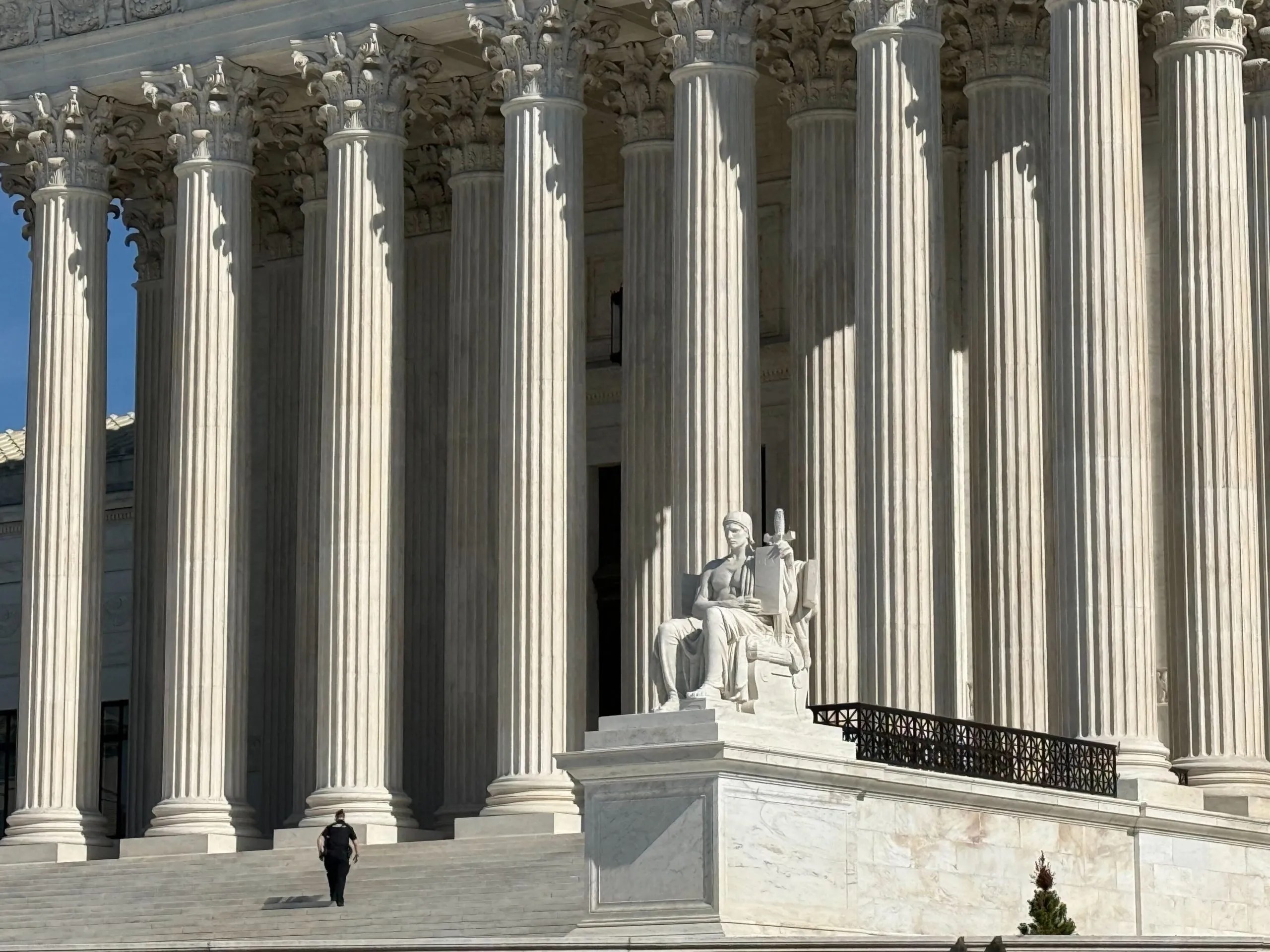Supreme Court allows Trump administration to terminate $783 million in NIH grants linked to DEI initiatives


By a vote of 5-4, the Supreme Court on Thursday agreed to allow the National Institutes of Health, the largest public funding source for biomedical research in the world, to terminate $783 million in grants linked to DEI initiatives. In a brief unsigned order, the court granted a request from the Trump administration to pause a ruling by a federal judge in Massachusetts that required the federal government to continue making the payments. Also by a vote of 5-4, the court left in place a different portion of the judge’s ruling, which had thrown out internal NIH guidance documents describing the agency’s policy priorities.
Justice Amy Coney Barrett provided the key vote on each issue. She joined Justices Clarence Thomas, Samuel Alito, Neil Gorsuch, and Brett Kavanaugh in voting to allow NIH to terminate the grants, but she joined Chief Justice John Roberts and Justices Sonia Sotomayor, Elena Kagan, and Ketanji Brown Jackson in voting to leave the lower court’s ruling on the guidance documents in place.
Jackson had sharp words for her colleagues, describing the ruling as “Calvinball jurisprudence” – a reference to the Calvin and Hobbes cartoon – “with a twist. Calvinball has only one rule: There are no fixed rules. We seem to have two: that one, and this Administration always wins.”
NIH ended hundreds of grants it linked to DEI-related studies in response to a series of executive orders issued by President Donald Trump after his inauguration in January. The first order, titled “Ending Radical and Wasteful Government DEI Programs and Preferencing,” instructed the director of the Office of Management and Budget, assisted by the attorney general and the director of the Office of Personnel Management, to work to end “discriminatory programs, including illegal DEI” programs in the federal government. It was followed by two other executive orders, titled “Defending Women from Gender Ideology Extremism and Restoring Biological Truth to the Federal Government” and “Ending Illegal Discrimination and Restoring Merit-Based Opportunity.”
Two separate groups of plaintiffs went to federal court in Massachusetts to challenge the termination of the grants. One group is made up of 16 states whose public universities receive funding from NIH, while the other consists of the American Public Health Association, individual researchers, a union, and a reproductive health advocacy group. They contended that the termination of the grants violated both the Constitution and the Administrative Procedure Act, the federal law governing administrative agencies.
U.S. District Judge William Young agreed that the grant terminations violated the APA. He explained that although “a new administration certainly is entitled to make changes — even unpopular or unwise changes” – it cannot “undertake actions that are not reasonable and not reasonably explained.” And NIH cannot meet this bar, he said, because “there is no reasoned decision-making at all with respect to the NIH’s ‘abruptness’ in the ‘robotic rollout’ of this grant-termination action.”
After the U.S. Court of Appeals for the 1st Circuit declined to temporarily put Young’s order on hold, U.S. Solicitor General D. John Sauer came to the Supreme Court, asking the justices to intervene. Sauer suggested that the case was governed by an earlier order inDepartment of Education v. California granting the Department of Education’s request to pause the payment of millions of dollars in teacher-training grants that included funding for DEI initiatives. In that case, the justices concluded that the government is likely to show that a different federal judge did not have the power to direct the government to make the payments. Instead, the majority said, lawsuits arising from contracts with the United States should be brought in a different court, the Court of Federal Claims, located in Washington, D.C.
The challengers urged the justices to leave Young’s order in place. The states contended that the termination of the grants “caused unrecoverable loss of scientific knowledge,” and the private plaintiffs wrote that putting Young’s order on hold even for a short time would “inflict[] incalculable losses in public health and human life because of delays in bringing the fruits of” their research “to Americans who desperately await clinical advancements.” And they distinguished their case from the Department of Education case in which the justices allowed the government to stop payments for teacher-training grants, noting that, unlike the challengers in that case, they do not have the money to make up for the lost NIH funding.
In a four-paragraph order issued on Thursday afternoon, the court indicated that it was granting the government’s request to block the part of Young’s ruling that required NIH to continue to fund the terminated grants. Citing its decision in the Department of Education case, the court stated that the district court did not have the power to rule on claims “‘based on’ the research-related grants or to order relief designed to enforce any ‘obligation to pay money’ pursuant to those grants.” And, according to the court, the federal government would face “irreparable harm” if it paid the money for the grants and then was not able to recover that money.
In a concurring opinion, Barrett indicated that she agreed that “the District Court likely lacked jurisdiction to hear challenges to the grant terminations.” But the district court likely does have the power to review a challenge to the guidance documents, she continued, even if those documents describe “internal policies related to grants.” Moreover, she observed, “vacating the guidance does not necessarily void decisions made under it.”
In an opinion concurring in part and dissenting in part, Roberts argued that this case was different from the Department of Education case precisely because Young had thrown out the guidance documents – relief, Roberts wrote, that “has prospective and generally applicable implications beyond the reinstatement of specific grants” and that “falls well within the scope of the District Court’s jurisdiction.” “And if the District Court had jurisdiction to vacate the directives,” Roberts continued, “it also had jurisdiction to vacate the ‘Resulting Grant Terminations.’”
Gorsuch, joined by Kavanaugh, wrote his own opinion concurring in part and dissenting in part. He emphasized that “[l]ower court judges may sometimes disagree with this Court’s decisions, but they are never free to defy them.” He acknowledged that “decisions regarding interim relief are not necessarily ‘conclusive as to the merits,’” but he stressed that a decision’s reasoning does carry weight going forward. “And California’s reasoning,” he wrote, “was clear” and “binds lower courts.”
In her own separate opinion, Jackson contended that the court’s decision in the Department of Education v. California case “was an even bigger mistake than” she had realized at the time because it “now apparently governs all” challenges under the federal law governing administrative agencies concerning “grant-funding determinations that the Governmentasks us to address in the context of an emergency stay application.” “With potentially life-saving scientific advancements on the line,” she concluded, “the Court turns a nearly century-old statute aimed at remedying unreasoned agency decisionmaking into a gauntlet rather than a refuge.”
In another separate opinion, Kavanaugh pushed back against Jackson’s suggestion that the court could avoid the dilemma of deciding what forum the claims will proceed in “by simply denying the application. That is wrong,” Kavanaugh wrote. “We have to decide the application” and make “that interim forum-channeling decision.”
Posted in Court News, Emergency appeals and applications, Featured
Cases: National Institutes of Health v. American Public Health Association